
(Photo: McNair Evans)
Somewhere between the docks and the crab shanties the horizon dissolves. You could see it before, the line between water and sky, aided by the few streetlamps onshore. But from the boat, the Chesapeake Bay unfurls like black satin toward nowhere.
This is Tangier Island Mayor James “Ooker” Eskridge’s favorite time, right after 4:30 a.m., when the motor’s gentle hum eases the world awake. You can lose yourself or find yourself, he says, “whatever is required,” in the empty hour that follows. And then, around 6 a.m., a pale orange line bleeds up from the east, and water and sky again become two.
As we approach the dock, he leans out, his leathery arms stretching toward a heap of braided ropes. He grabs one and stills the boat, tying a cleat hitch. Then he steps onto the wood-planked shanty that’s housed his soft-shell crab operation since 1970. There are dozens of crab shanties clustered in Tangier’s harbor, and most offer a glimpse into the lives of the men who own them. For his part, Eskridge raises American and Israeli flags. After adjusting the bill of his Make America Great Again hat, he pulls on his yellow oilskin and rubber boots.
Then he works. He stands over the tank that holds adult soft crabs, the busters and peelers soon to shed their shells for the last time. He sorts through them with quick, callused hands. He tosses shells into the bay and dead crabs into a red, perforated bucket—he can use them for eel bait. And then his fingers find the spongy skin of a crab ready to be packaged and shipped: She goes in a yellow cardboard box. He moves like a driver on an empty highway—programmed by instinct, his mind elsewhere. He tells me about a scenario he imagines often, in which a hurricane destroys the island and he observes the wreckage from above, as though he were a ghost.
This has been his rhythm for decades—arguably since he was four years old, when Eskridge’s father, a crab fisherman like both his father and grandfather before him, first took him out on the water. The 60-year-old knows every inch of Tangier, this 1.2-square-mile strip off the coasts of Maryland and Virginia, population about 450. So it’s with confidence when he crouches down to show me the waterline on one of the wooden pylons propping up the shanty. “It’s the same as it was 30 years ago,” he says. “If sea level’s rising, it’s not enough to where we can see it.”
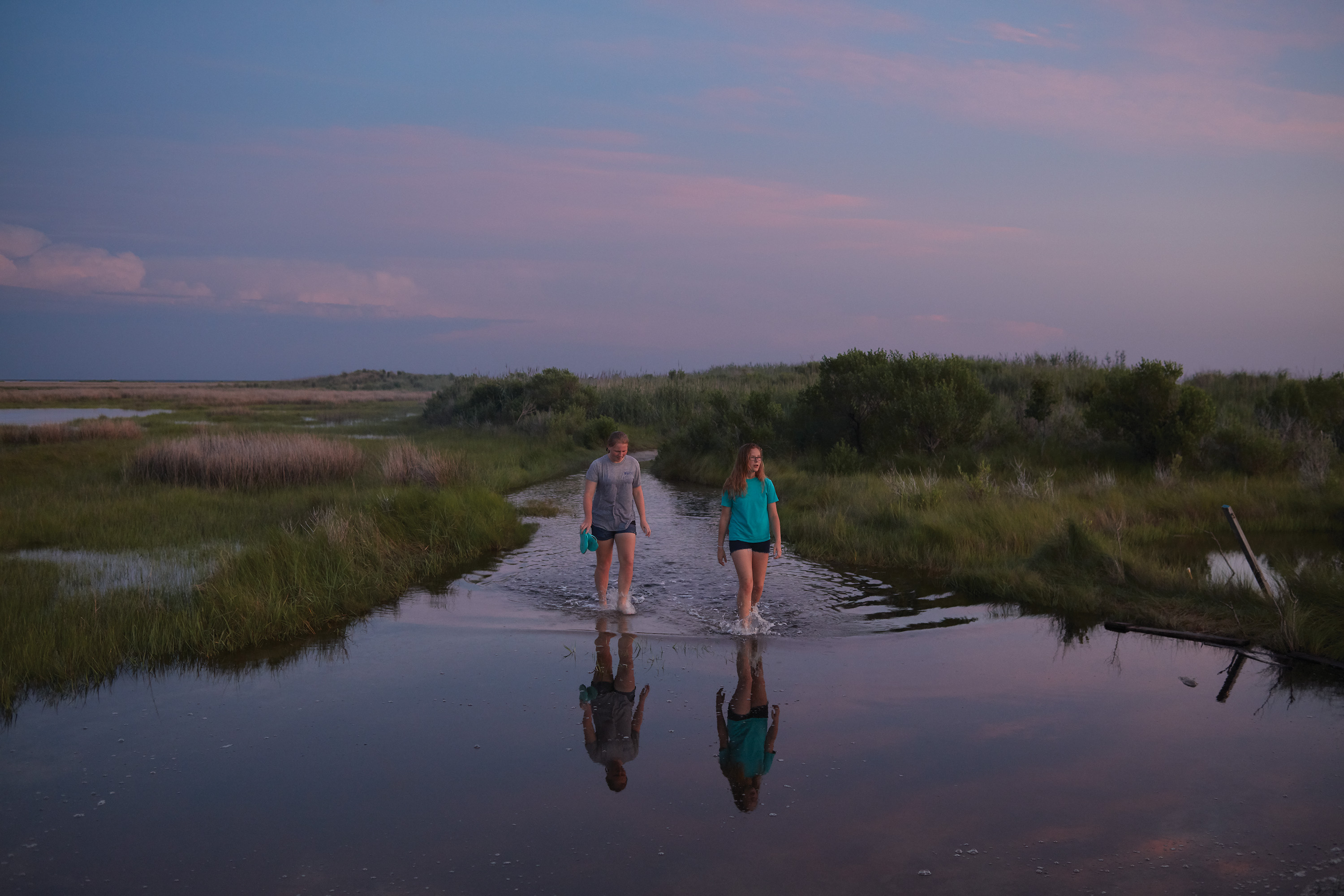
(Photo: McNair Evans)
The question of sea-level rise in Tangier’s waters has captured much of America’s attention in the last few years. Back in 2015, the science journal Nature ran a study warning of Tangier’s demise at the hands of sea-level rise due to climate change. The dire findings caught the attention of climate scientists and, of course, the island’s residents themselves, most of whom were skeptical. But it wasn’t until last June, when Donald Trump came calling, that Tangier’s plight crept into popular consciousness. After his advisers showed him a CNN report about the disappearing island and its pro-Trump inhabitants, the president phoned Eskridge and personally urged him to drop any concerns about sea-level rise. And suddenly everyone, it seemed, had an opinion on what was happening on this previously obscure island, rendering Tangier a poster child for both sides in the national conversation on climate change.
The story of Tangier has largely been limited to the inevitability of an island going down—the science behind it, the politics around it. And without new infrastructure, fast, Tangier is indeed going down. What’s been left out, however, is why its people are willing to go down with it—and why they’ve risked it all on Trump to keep them afloat.

I first met Eskridge on a warm October afternoon outside Tangier’s one small grocery store. He was breezing down Main Ridge Road on a black motor scooter, wearing faded jeans and a T-shirt, which I’d come to know as his uniform. He motioned for me to hop on the back of the scooter.
Tangier has long been fascinating to American linguists. Islanders stretch out their vowels such that certain words with one syllable inch closer to two: “tide,” for instance, becomes “thai-yid.” They also “talk backwards,” as they call it, something like sarcasm but without the bite. “An ugly day here today,” Eskridge says as we begin our tour of the island. As I’d learn in the next beat, that actually means it’s nice out.
When Eskridge was young, his attempt to pronounce “rooster” came out as “ooker.” It stuck as a nickname. Nobody in town calls him James, or mayor, for that matter. “Whaddya say, Ooker,” says a gray-bearded man waving from a golf cart. Eskridge salutes back. “Whaddya say, Cap’n.”
We ease down Main Ridge Road, which splinters off into several narrow gravel paths. Picture residential, doll-like homes boarded by white shiplap and black shutters. As we get closer to the shore, the homes get taller. Front yards have morphed into marsh-like land, forcing the houses to be retrofitted with cinder-block footings and stilts. Pools of water gleam beneath elevated porches.
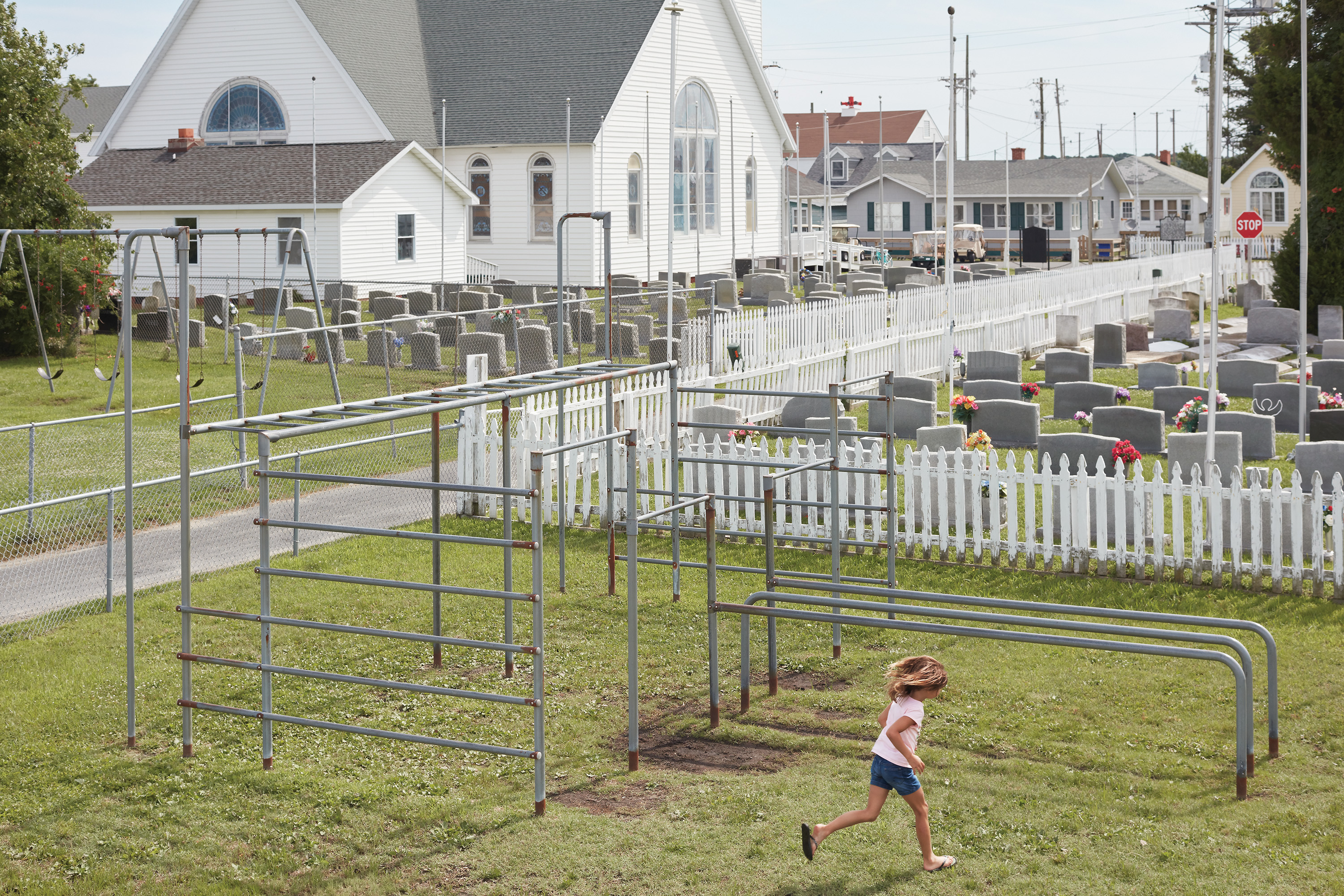
(Photo: McNair Evans)
We skirt the shoreline. The most striking thing about Tangier is just how low it is, as though water and land exist on the same plane. In fact they almost do: The island is an average of fewer than four feet above sea level. (Compare that to an average of six feet in Florida’s Miami-Dade County.)
Finally, we find Eskridge’s home, one story with beige panels. In the yard, another Israeli flag ripples beside a teal flag with the Christian fish symbol, matching the Star of David and fish tattoos on his forearms.
He lives here with his wife, Irene. They met more than 40 years ago, back in high school. At the time, entertainment was scarce on Tangier, as it is now: There’s no movie theater or bowling alley, for instance, and the island is dry—many, like Eskridge, claim never to have tasted alcohol in their lives. So for their first date, a longhaired and witty Eskridge drove Irene, blond, quiet, and kind, around the island on his scooter. They ended up on the south side of what teens here call “the kissing bridge.” They were married a few years later at the Methodist church.
Talk to many families in Tangier and you’ll hear similar stories of origins. Many couples met in school, as did their parents and grandparents and so on. They graduated and married, and husbands began crabbing or oystering full time while wives stayed home and raised children. They went to church on Sundays, and this, of course, was nonnegotiable: In the 1920s, according to an old Newsweek report, a visitor to the island faked sick to skip a worship service and was later shot.
That cadence has remained largely fixed since Captain John Smith discovered Tangier in 1608. This means that the surnames of those early residents—Crockett, Dise, Parks, Pruitt—are still plenty here. You’ll also see them on tombstones across the island, whether in the cemetery next to the Methodist church or in family grave plots in a home’s front yard. (“You’ll never find no better neighbors,” one resident cracks.) In the past couple of decades, the rise of the Internet has complicated the islanders’ isolation, helping to draw teenagers to life on the mainland after high school. The problem is that very few have decided to come back. “It’s one of the existential threats facing the island,” says Earl Swift, a residential fellow of the Virginia Foundation for the Humanities who has written extensively about the island. “And among the older people, you’ll hear a great lamentation for the falling population.”
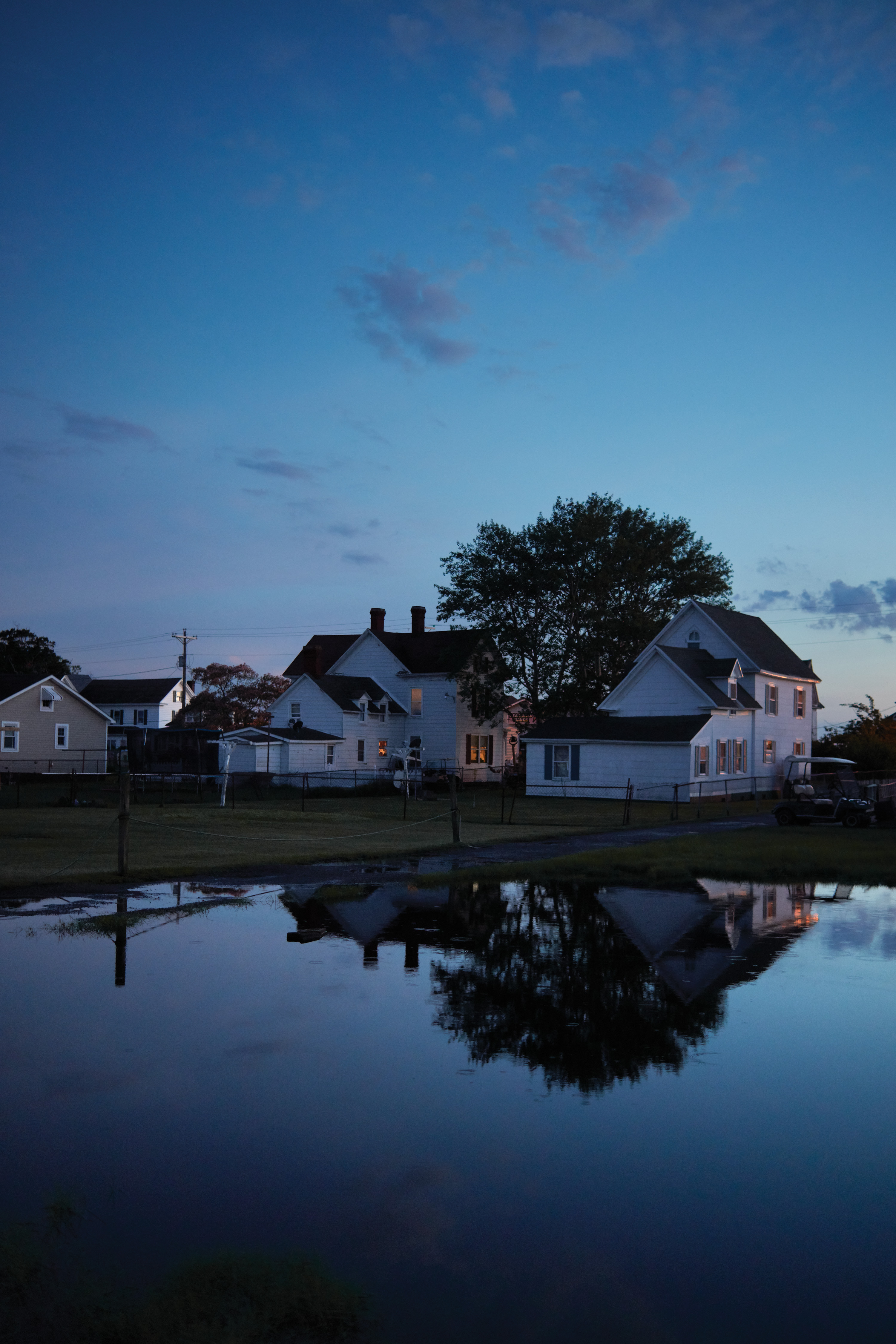
Indeed, when the rhythms of life in a place remain largely constant from generation to generation, that constancy becomes as much a point of pride as the rhythms themselves. This is especially true if you believe the world outside has gone haywire, as so many on Tangier do. Step onto the mainland and you’ll find yourself ensnared in the cultural upheavals of the moment, in pink-hatted marches and rainbow flags and suspicions of anyone who dare not appreciate them. Here, though, there is Jesus, there is the water, and there is, still, the land. To live a meaningful life is to understand those three things intimately, as a grounding and lifeblood and home. “All we are is just a simple people,” says lifelong resident Barry Williams. “Work on the water and come home, feed our families.”
It is also to stand firm when an outsider calls your understanding of those things into question. In the living room of his home, Eskridge taps the thin glass covering a painting of the bay. Underneath the painting is a Bible verse, Mark 4:39. “And He arose, and rebuked the wind, and said unto the sea, Peace, Be Still,” the verse reads. “And the wind ceased, and there was a great calm.”
“I believe this,” Eskridge says. “If God still has a use for Tangier, nothing’s gonna happen to us.”

Climate scientists believe Tangier could be uninhabitable within 25 years.
David Schulte, an oceanographer for the United States Army Corps of Engineers who’s published writings on the Chesapeake in journals including Science, co-authored the 2015 paper in Nature that put Tangier on the map. Based in Norfolk, Virginia, he’d been studying the island for years, alarmed by the lack of attention to the place he and his colleagues predicted could see some of the nation’s first refugees of climate change.
Thermal expansion is partly to blame for Tangier’s plight: As Earth warms, oceans expand, and sea levels rise. And since the 1990s, ice sheets in Greenland and Antarctica have thawed at accelerated rates, likely in part as a result of man-made global warming, dumping more and more water into the oceans.
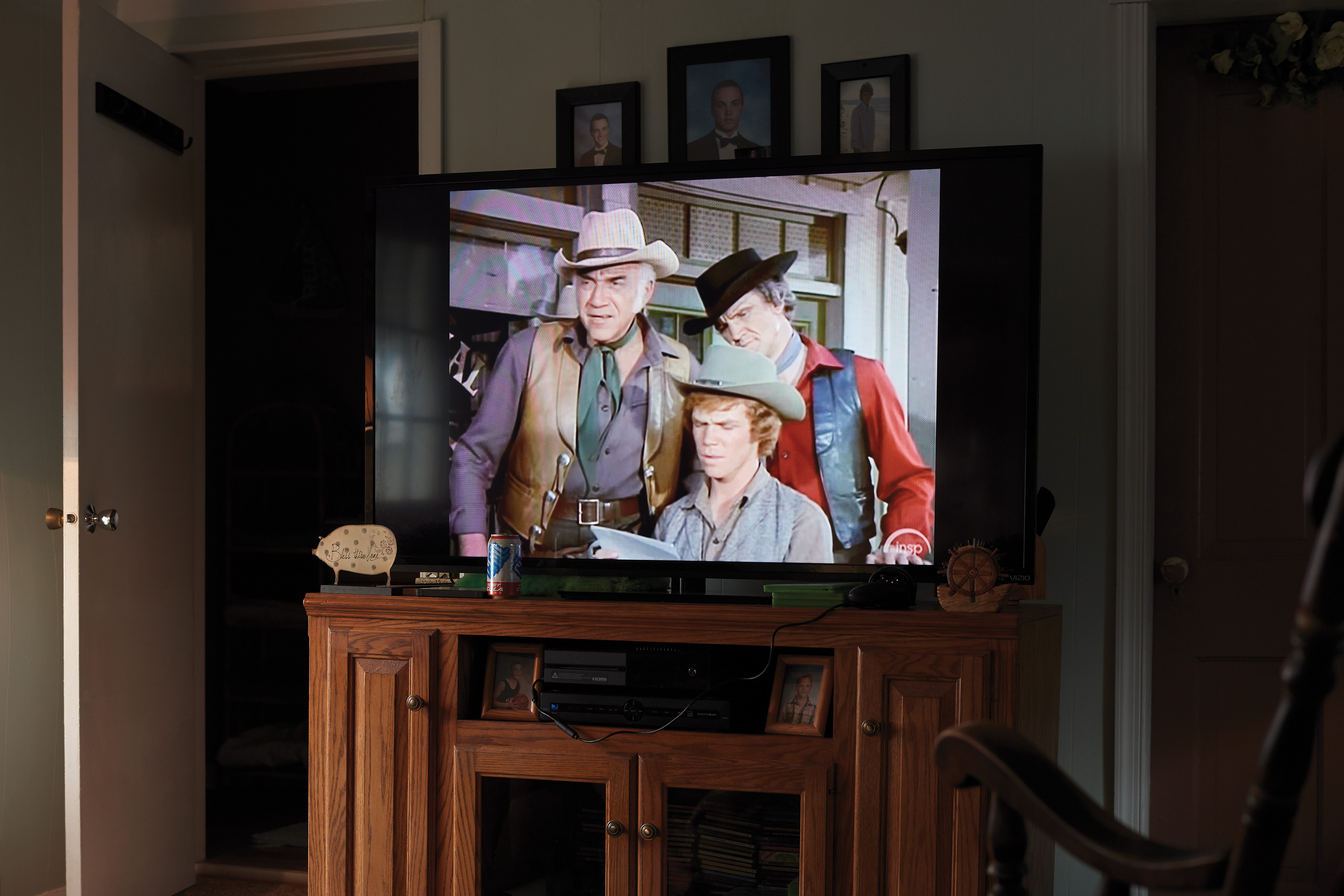
(Photo: McNair Evans)
Tangier is also coping with events dating back to the Ice Age, when a gargantuan ice sheet that stretched into the Chesapeake pressed down on the earth. It’s long since melted, of course. But Tangier, which was lifted up when that ice sheet was pressing down to the north, is now sinking as the land to the north continues to rebound—kind of like a seesaw. “That just adds on to the sea-level rise and makes the problem worse here,” Schulte says—approximately 40 percent worse.
The Army Corps estimates that Tangier’s waters are rising at a rate of nearly five millimeters a year, and accelerating. It’s an astonishing number, Schulte says—the global rate of sea-level rise is about three millimeters a year—but as with most things incremental, “not something you’re going to notice from day to day, driving your boat around in the bay.”
In his paper, Schulte concludes that the island has lost around two-thirds of its landmass since 1850. At that time, it had seven areas of high ground; most have since become marshland, and, today, there are only three. The island’s location—smack in the middle of the Chesapeake—coupled with a foundation largely composed of silt and sand, has made it a punching bag for waves. Locals don’t dispute this: They’ve grown up watching waves strip away their shoreline. They know that Tangier is washing away. But many of them argue that coastal erosion is nothing new, a natural cycle that, with enough money for a seawall—a large rock barrier around the whole island—they can ultimately blunt.
Yet sea-level rise and erosion aren’t separable, Schulte says. As sea-level rise has quickened in the last three decades, erosion has gotten worse. “Let’s say you have a storm that’s coming in from the west,” Schulte explains. “Now, the wave energy is going to hit the west shore of Tangier, and although the town is protected, the northern part is not. As the sea level rises, those waves are going to be able to hit higher up on the island itself.” So instead of waves hitting, say, a sand beach, they’ll start to hit the island’s peat marsh—a far more vulnerable turf.
“Once the wave energy gets high enough to start striking that layer,” he says, “it just starts tearing the island apart.”
Schulte and Eskridge agree on one thing: Tangier needs a seawall, and it needs it now. That Eskridge believes a seawall is all they need, the ultimate solution to the island’s woes, however, is where they differ. In Schulte’s view, a seawall is the equivalent of a (very expensive) Band-Aid, buying the island another decade or so to get going on the kind of (much more expensive) construction project that could preserve it long-term. “If I had my way, it would already be in the [congressional] budget to do a large-scale study to basically engineer a solution to the island,” Schulte says, a fix that would likely involve elevating the town by several meters.
As other climate scientists began to take note of Schulte’s findings, and Tangier residents began to push back, CNN caught wind of the debate. Last June, a reporter and small crew showed up to spotlight the sinking island.
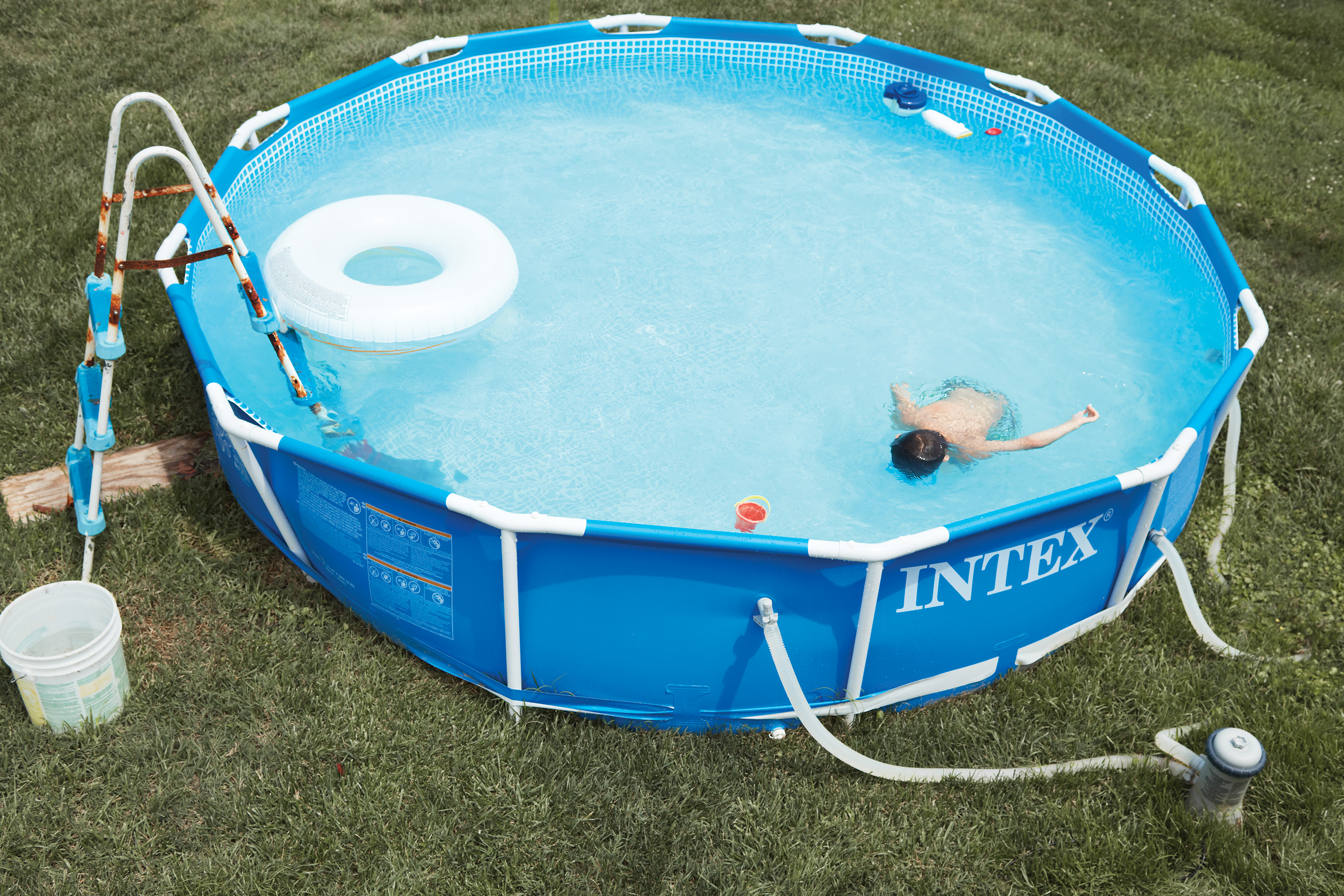
(Photo: McNair Evans)
At first, Schulte was thrilled—Tangier, he felt, was finally drawing the international attention it deserved. Yet he also says that, rather than sharpening the conversation, or bringing the island closer to the infrastructure it needs, it helped make Tangier “a political football.” In the CNN piece, Eskridge said he loved Trump “as much as any family member I got.” Which meant that a firestorm was ignited not necessarily over how to help Tangier, but over whether a hotbed of Trump supporters who refused to recognize the problem even deserved salvation. “What amazes me is how political and polarizing this issue became,” Schulte says.
And then Trump called.
Less than a week after the CNN report aired, Eskridge was crabbing when one of his sons flagged him down. His son told him the president would soon be calling. Eskridge raced back home and waited by the phone. Trump finally rang. “We chatted for about 12 minutes,” Eskridge recalls. “We talked about sea-level rise, and of course we’re on the same page. He said Tangier has been here for hundreds of years, and it would be here for hundreds more.”
“Now, he knows about the erosion problem,” he continues. “As for climate change, he said, ‘It’s just cycles and whatever changing. I don’t believe that it’s man causing it.'”
Outside of Tangier’s own citizens, very few people seemed to be championing Eskridge’s diagnosis of the island. But Trump’s endorsement made for a potent salve. Since the CNN report, Eskridge had been receiving hate mail, but the hastily scrawled missives—”Dumb cracker,” wrote one stranger; “You deserve to sink,” said another—no longer seemed to sting.

For Eskridge, loyalty on this island lies squarely with Jesus, but Trump is not far behind. He was deeply invested in the 2016 election and felt like he had a stake in things. Sure, he was a lifelong Republican, like most folks on Tangier. But Trump stirred something visceral in him, Eskridge says, reviving a hope that, on issues he cares about most—abortion, religious liberty, crabbing regulations—not all was lost.
There was a time when Eskridge believed people across the country weren’t all that different from him. Maybe not all of them were Christians, but it seemed like there was a healthy fear of God in society. Prayer in schools wasn’t up for debate, for example, and gay marriage still seemed unconscionable. Even Barack Obama, whom Eskridge disliked—”He just didn’t seem like he loved America,” he says—entered office professing to believe that marriage was between a man and a woman.
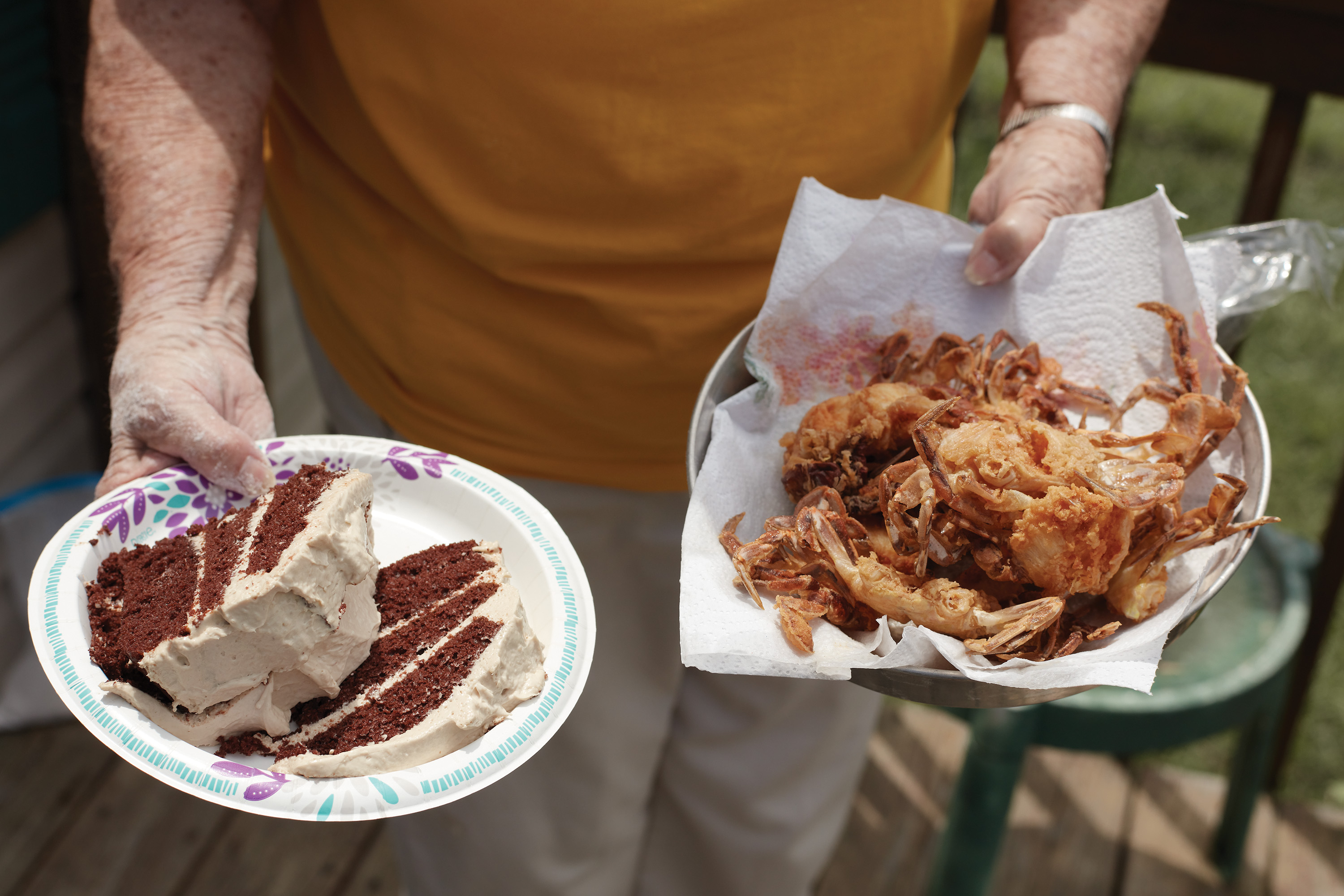
(Photo: McNair Evans)
Then, suddenly, by the time Obama left the White House, same-sex marriage was legal. And issues that had never seemed prevalent in our cultural consciousness—gender dysphoria, transgenderism—spilled into the open. How did our culture decide this was OK, Tangier residents wondered, and so fast? And why are we suddenly called bigots for believing in the same order of things that, up until now, everyone else seemed to believe in too? “Each generation gets a little farther away from the truth,” Eskridge says, “like the Israelites did.” It’s one of the reasons some islanders banded together to start a non-denominational church a few years ago: The Methodist church as an institution, he says, is “getting politically correct. They’re into stuff they shouldn’t be into, with gay marriage and gay pastors, and those things shouldn’t even be up for discussion.”
Trump affirmed what Eskridge and others had been seeing with their own eyes: The country was changing. But, more importantly, they didn’t have to accept this change as gospel. Democrats tend to talk about change in unilaterally positive terms and insist that progressivism is always progress. Yet large-scale cultural shifts can be disorienting from the vantage point of an island where residents have succeeded in resisting change for a very long time. In the past, they may have just bemoaned those shifts from afar because their isolation kept them immune from the impact. But the last three years—what with scientists warning that Tangier is sinking—have caused many to worry, if only privately, that they won’t be able to retreat for much longer.
Up until 20 years ago, “we didn’t go off the island,” says George “Cook” Cannon. “Maybe go to Sam’s, or the Walmart, or the Lowe’s. Red Lobster. Because the thing is, the more you communicate with the outside world, the more that it’s gonna rub off on you.”
Trump endeared himself to Tangier not just because he affirmed what they were seeing, but also because he believed in what they weren’t seeing. Most Tangier residents insist that sea levels aren’t rising because, quite simply, they don’t see it happening. “It’s not a political issue to me. I’m not lyin’ about it,” Eskridge says. “I’m just tellin’ folks what I see. … I’m not a scientist, but I’m a keen observer, and I don’t see it.” How empowering it is, then, when the leader of the free world tells you that he agrees, and pledges that your home will be safe for hundreds of years yet.
So say Eskridge and his closest friends, gathered one afternoon in what they call the Situation Room. They congregate almost every day in this small, teal-tiled space that used to be part of the old health center. In fact, some of the men were born in this room. They now use it to gossip and talk politics.
“I wish we could get him to come here,” Jerry Pruitt, who is in his seventies, says of Trump. A few minutes later, he turns in his chair toward Eskridge. “You should call him and say you’d like to have a meeting with him—you might get him.”
“Yeah, you know, Donald Trump could put the wall around here,” Eskridge says, his arms outstretched. The six men chuckle. “I’ll say, ‘Hey, we’ll take the wall, and we’ll even name it after him.’ The Donald Trump Seawall.”
Pruitt nods. “I believe he’d do great if they’d….” The room finishes his sentence in chorus: “Work with him.” Pruitt continues: “Ain’t got nothing to work with, not on either side.”
Still, they’re confident Trump can cut through the congressional morass and get them a seawall. “We’re on the same page,” Eskridge says. He’s the first president in a long time, it seems, “who knows what we need.” (At press time, a bipartisan water-infrastructure bill that would authorize the study of flood risk management for Tangier Island, but that makes no mention of a seawall, had passed out of committee unanimously.)
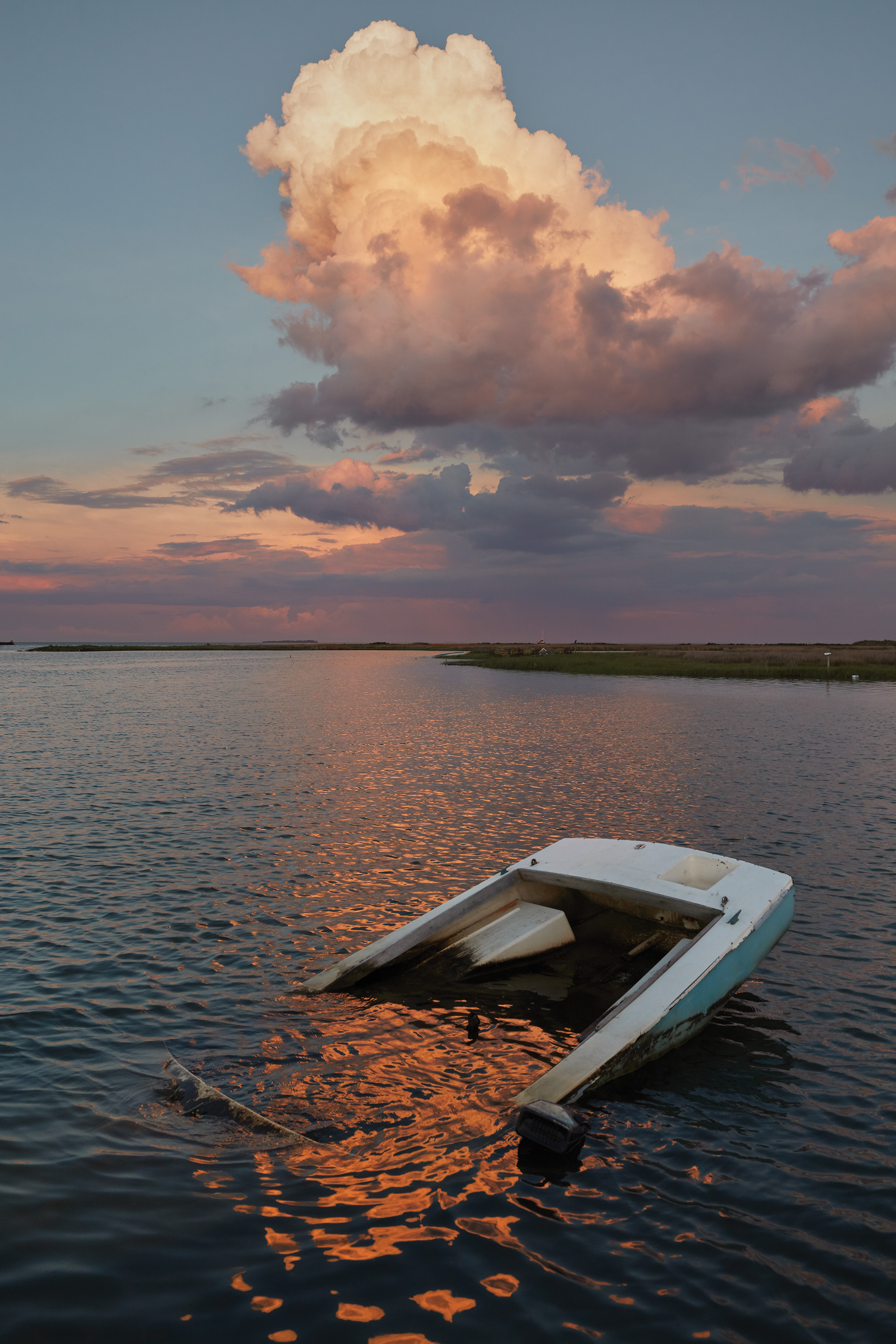
(Photo: McNair Evans)
Their conversation offers a glimpse into the unshakable loyalty of Trump’s base. To feel seen is powerful, especially when the last Republican president turned out to be a country-club conservative like all the others. To feel seen is enough to make the islanders of Tangier trust that what Trump promises is, in fact, coming. But it’s tough to overstate the stakes: For them, the difference between Trump being right and Trump being wrong is not bragging rights, or more-favorable mid-term elections, or fewer brown people in America. It is the difference between their home—and way of life—being above water or below it.
So what if he is wrong, as all available science shows he is? What if the problem is, in fact, bigger than a seawall can solve?
Says Eskridge: “We ain’t thought that far ahead.”

Last August, Bob Inglis and a camera crew trooped to Tangier for a two-day visit. Seven years ago, the former Republican congressman from South Carolina founded what would become republicEn, a grassroots effort that promotes “free enterprise” solutions to climate change. Inglis had teamed up with Starbucks to shoot a short film on how sea-level rise was imperiling the island.
They had all but written the script before they arrived. Inglis expected to play the role of “climate warrior” doing “battle” with “troglodytes on a sinking island,” he says. He expected a crush of emblematic Trump voters, angry white men ready for combat. He didn’t expect to convince them of the realities of sea-level rise—and that was just fine, as far as making a good video went. The ostensible purpose, though, was to evangelize on the “need for action” on climate change, nebulous as that may be.
“It turned out to be a different story,” Inglis says.
Eskridge ferried him around the island. He told Inglis about how his wife had always wanted a girl, how they’d had trouble conceiving again after having two boys. They ultimately would adopt four daughters from India, women who are now in their twenties and living in different cities across the country. That’s why his boat is called Sreedevi, he told Inglis, the name of their first daughter. He showed him the osprey nesting platforms he’d built. “I grew up on the coast, but I’d never been that close to an osprey nest,” Inglis reflects. He was enthralled by Eskridge’s familiarity, gentleness with the animals, how he’d named several different seagulls and knew them by sight. “In other words, this guy is wonderful,” he says.
Listening to Inglis recount these moments is a lot like listening to a breathless college kid fresh off a summer abroad. It’s been a common theme in the last couple of years: quixotic dispatches from “Trump’s America” meant to unveil those who sent a reality-television star to the White House. Inglis is aware he sounds clichéd: “You taught me not to judge a book by its cover—a lesson that I’ve learned over and over but that I seem to forget as often as I learn it,” he would later write in a letter to Eskridge.
Inglis was correct, though, in predicting he wouldn’t change hearts and minds. He saw their contradictions up close, he says. “One of the first things I noticed is that people park their golf carts up on little docks in their front yard—wooden platforms that are maybe a foot, 18 inches off the ground.” This is to keep the water from ruining their electrical systems. “Then we went by the schoolhouse, and I saw the schoolhouse had been raised about six or eight feet, because at high tide, there’s water underneath it.”
Inglis understands that Tangier residents premise their argument against sea-level rise in observation. Which made it hard for him to understand how visuals such as the golf cart platforms and the elevated schoolhouse didn’t at least cause them to pause and reconsider. Because those scenes show standing water, immovable water, water pushing up above the ground—something erosion alone can’t explain. I ask Eskridge how he squares this. “It’s not any worse than it’s always been,” he says.
By the end of his trip, Inglis found himself in some ways sympathetic. “I think what I learned is that, if I were in that situation, maybe I, too, would want it to be something other than sea-level rise,” he says. “It’s just hard to cope with the thought that your whole way of life is going to go away.”

(Photo: McNair Evans)
In the U.S., those who advocate for policies intended to curb the rate of global warming almost always speak in terms of the future. Which makes sense: As of now, there are very few Americans who have seen their daily lives dramatically altered by climate change. When policy debates are centered on predicted damage, though, and not the here and now, it is harder to spark passion and urgency among voters. For Inglis, Tangier is the canary in the coal mine for the devastating effects of sea-level rise along America’s coasts. But, he says, it is also the first test of how effective we are in shifting our vernacular—from the cerebral language of scientific models and calculations to the language of the present, of lives and families and homes.
So far, it’s not going well. Last summer, CNN brought Eskridge and his wife up to New York to participate in a climate change town hall with Al Gore, whom many Americans regard as the face of the issue. Eskridge asked Gore why he wasn’t seeing physical evidence of sea-level rise. Gore cited the science. Then he told a joke about a man who was trapped at his home during a flood. The man refused three modes of rescue, saying the Lord would provide. After the man died and reached heaven, he told God he thought he was going to save him. “And [God] said: ‘What do you mean? I sent you an SUV, a boat, and a helicopter,'” Gore finished.
For Eskridge, of all the moments in the debate, this one stands out the most. In his view, it was a reminder that Gore and his cohort look down on people like him and their beliefs. “I didn’t like the joke,” he says. “I thought it was in bad taste.”
Such jabs undermine efforts to communicate the science of sea-level rise. Of course, some on Tangier are stridently anti-science, and nothing is likely to change that. (Indeed, Cook told me that he could not accept what scientists say about Tangier “because they’re the same people saying that we came from monkeys.”) But the more important point is this: For many in Tangier, to accept that sea levels are rising is to admit, in some sense, that they don’t know their home as well as they thought they did. It’s a shameful prospect, and Gore’s joke only pushed them further on the defensive. As Jerry Pruitt put it that afternoon in the Situation Room: “How is somebody in New York City gonna tell us what’s coming off on this water?” Without an intimate understanding of this context, Inglis now believes, Americans will remain viciously polarized on climate change.
Trump could be helpful here, Inglis says, given the trust he’s gained in Tangier. But he feels the president has only made the problem worse. “To have the leader of the free world, who doesn’t know anything about what he’s talking about, saying this island’s going to be here for hundreds of more years….” Inglis pauses for a moment, exasperated. “It’s like the bridge is out ahead, and Donald Trump is out waving people on, telling them: ‘Pedal to the metal. Faster, faster!'”
He adds: “As their houses go under water, I wonder if they’ll look back and say: ‘Remember that guy who was president? Why didn’t he tell us?'”

On a Thursday around dusk, Eskridge and I cruise out to Uppards, a secluded wetland north of town. Uppards was once a major hub of Tangier, a site of houses and beaches. Most homes had been abandoned or relocated by about 80 years ago, and the land that once connected Uppards with the rest of the island had long been under water.
Today, the land is uninhabitable. It’s how Schulte and others predict the entire town could look someday—little more than tangled cordgrass, pools of water, a last gasp of sand along the shore. But locals still come out to hunt for treasure—arrowheads and pottery and sea glass and bottles. Even bones. After a storm, it’s not unusual to see human remains from Uppards’ old graveyards scattered about.
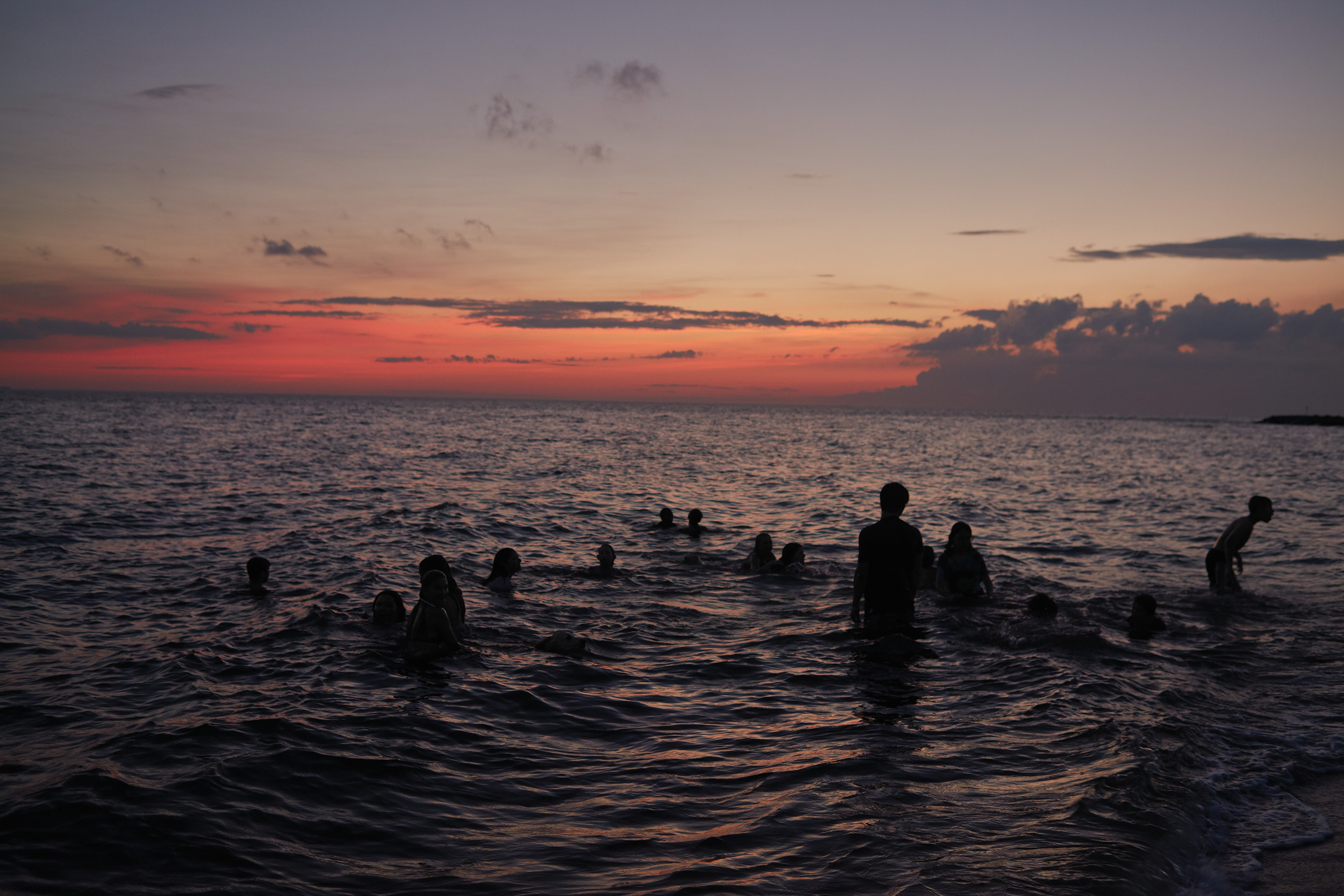
(Photo: McNair Evans)
If Trump keeps his word, Eskridge believes, the rest of Tangier will evade Uppards’ fate. But the path forward is complicated, especially in the post-earmark world.
All of which alludes to a thornier question: Is Tangier even worth saving? As the Miamis and Manhattans of the country face the increasing threat of sea-level rise, Congress will be forced to reckon with what makes some places more valuable than others. Is it history? Culture? Economy? The sheer number of residents? “I hope that it will be a mix of things,” Schulte says. “In Tangier you have a foundation of a unique history and culture. You have the fact that they’re the last island of their kind, and also the ecological services the habitat itself is providing.”
Trump has indicated through his words that this island is, in fact, worth saving. Yet it is one thing to address the forgotten man; it is quite another to fully comprehend his plight.
Eskridge and I trek the Uppards shoreline, crouching every few feet to sift through the shells and debris. At one point we find a black stone of sorts, cardstock-thin with jagged edges. “This looks like an arrowhead,” he muses. Using a stick, he unearths it from the sand. He stares at it for a bit, squinting against the darkening sky. It’s not until he picks it up, eases his thumb across the surface, that he knows it’s not. Knows the shape’s not quite correct, that it’s a touch too thin, that sometimes our eyes don’t get it right. We head back to the boat.
We talk once more about Trump. During their phone call, the president told Eskridge to swing by the White House the next time he was in Washington, that he was eager to meet with him and discuss next steps. At the end of summer, Eskridge typed out a letter requesting to do just that. He also invited Trump to see the island himself: “You would receive the warmest and most enthusiastic welcome,” he wrote.
I ask if he’s heard back in the year since. He shakes his head. “No,” he says, and tosses the stone back into the bay. “Not yet.”
A version of this story originally appeared in the September/October 2018 issue of Pacific Standard. Subscribe now to support independent journalism in the public interest.





